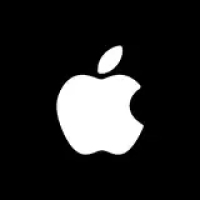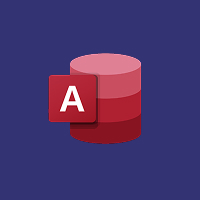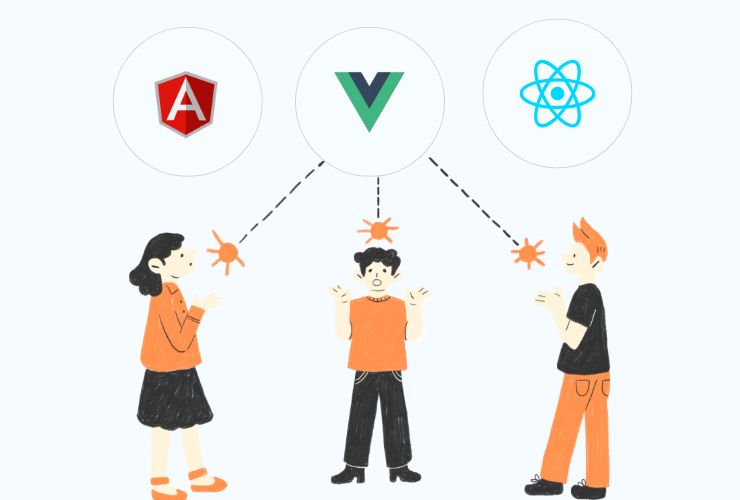When it comes to developing contemporary web applications, choosing the appropriate JavaScript framework is critical. The fast pace of web technology evolution presents developers with numerous choices. Of these, Angular, React, and Vue have become three of the most popular frameworks. Each has its own strengths and characteristics, but how do you determine which one to use for your next project? In this article, we will delve into the main differences between Angular, React, and Vue, enabling you to make a well-informed decision about which framework is most suitable for your requirements.
1. Angular – The Full Package
Angular is a full package, open-source framework designed and developed by Google. It is designed as an end-to-end solution for building large, complex web applications. The framework bundles everything you need to get started right away, including routing, forms, HTTP requests, and state management. It follows the Model-View-Controller (MVC) paradigm and uses TypeScript, a statically typed superset of JavaScript that minimizes bugs and simplifies maintenance.
Advantages of Angular:
Complete, Opinionated Solution: Angular is a full-fledged, mature framework that provides a complete, opinionated solution to application development, which benefits developers by saving them time as it provides solutions for routing, forms, HTTP requests, and state management out of the box.
Built-In Features: It also has built-in features such as Angular CLI (Command Line Interface), which simplifies project creation and management, and strong templating support.
Massive Community Support: Due to such immense support from Google and its huge ecosystem, Angular gets ample strong community support and updates.
Ideal for Large-Scale Applications: Due to its maintainable architecture, Angular is a strong contender as the default framework for large-scale enterprise applications.
Weaknesses of Angular
Steep Learning Curve: Because Angular is so opinionated and heavy-duty of a framework, it’s got a steep learning curve, especially for new developers or new developers on another framework.
Heavy Framework: Angular’s severely heavy on small projects, and that makes the load times slower and can also build performance problems if optimized not enough.
Limited Flexibility: While the structure of Angular guarantees stability, it could prove to be restrictive for developers who enjoy greater flexibility in the way that they like to design their applications.
2. React – The Flexible UI Library
React by Facebook is a JavaScript library where its primary concentration is the creation of user interfaces. It is not as comprehensive as Angular but is rather a library that excels specifically at building fast, dynamic, and interactive user interfaces with reusable parts. React is less restrictive than Angular, and because it only deals with the “view” layer, it can be supplemented very easily by other libraries and frameworks to cover other aspects like routing and state management.
React uses a virtual DOM, which enhances performance by minimizing the number of updates to the actual DOM. This makes React a great choice for applications where dynamic user interaction and high performance are critical.
Benefits of React:
Component-Based Architecture: The component-based architecture of React enables developers to build reusable UI components, and it is easy to maintain and update the app.
Fast and Dynamic: React makes rendering fast and updating faster with virtual DOM, which is particularly helpful for those apps that have very much coming-and-going data changes.
Large Third-Party Ecosystem and Community: React has a huge community and very huge third-party ecosystem of libraries, tools, and resources, so it is easier to find solutions for common issues.
Flexibility: React is highly flexible, and you can couple it with other state management libraries (e.g., Redux) or routing libraries (e.g., React Router), giving developers a solution that is adaptable.
Weaknesses of React:
Not a Full Framework: Compared to Angular, React is UI-centric only and does not offer any pre-solutions for state management or routing. Other libraries must be implemented by developers in order to manage these, which complicates things for development.
JSX Syntax: React employs JSX (JavaScript XML), an extension to JavaScript syntax that allows writing HTML itself inside JavaScript code. It is usually puzzling for newcomers to React, especially when they have no idea about JSX.
No Opinionated Structure: There is no structure of applications in React that can lead to inconsistency in large projects or teams.
3. Vue – The Progressive Framework
Vue is an evolving JavaScript framework that is easy to use, easy to integrate, and has a gradual learning process. Unlike Angular that provides an end-to-end solution, Vue allows developers to pick up its features in incremental steps. This means you can apply Vue to a simple component of a project (such as the view layer) and increase its usage over time as the project unfolds.
Vue features a clean syntax, and the developers can keep up with it quickly without facing any sharp learning curve. Vue also has the best of both React and Angular and provides flexibility, performance, and an interference-free development process.
Benefits of Vue:
Simple to Learn: Vue is easy to learn, especially for the developers who already know HTML, CSS, and JavaScript. Clean syntax and neat documentation make Vue an ideal framework to begin with.
Small File Size: Vue is a light-weight file size framework, which makes it load fast, one of the reasons why it is ideal for performance-critical applications.
Built-In Components: Vue includes state management (Vuex) and routing (Vue Router) out of the box, so developers do not need to install third-party libraries for them.
Flexible and Expandable: Vue can be applied to everything from tiny and straightforward projects to large and complex projects. Vue is also incrementally adoptable, which means you can start with just what you need.
Weaknesses of Vue
Smaller Community: While Vue has a growing and committed community, it is smaller compared to React’s or Angular’s. That means that maybe fewer resources or third-party plugins will be available.
No Corporate Support: In contrast to Angular (backed by a large corporation in the form of Google) and React (backed by Facebook), Vue enjoys less comparable corporate support, and therefore there could be questions about future support.
Limited Enterprise Features: Vue is ideal for small and medium-sized applications but may fall short of having some enterprise features that Angular provides and thus be less ideal for applications of larger scales in some cases.
When to Use Angular, React, or Vue?
Use Angular when you are developing a large-scale, complex enterprise application with a need for a mature, opinionated framework. Angular will be most suitable for teams that require an orderly and out-of-the-box solution for everything.
Choose React when you desire flexibility and performance to build highly interactive user interfaces. React suits dynamic data-changing applications and offers the additional benefit of being free to use with other libraries for added functionality.
Choose Vue if you prefer simplicity, ease of use, and flexibility. Vue is most appropriate for developers who prefer to build incrementally and would like to develop small and big applications with less learning curve.
Conclusion
Choosing the right JavaScript framework—Angular, React, or Vue—depends on your project’s specific needs. Each framework has its own set of benefits, so it’s important to weigh factors such as the size of your project, the experience of your team, and the long-term objectives of your application. Angular is ideal for large-scale, enterprise-level applications with high requirements, React is ideal for creating dynamic user interfaces with fast performance, and Vue offers an easy, versatile solution that’s easy to integrate for developers at all levels.
Contact Us Today













 Database Development
Database Development












































